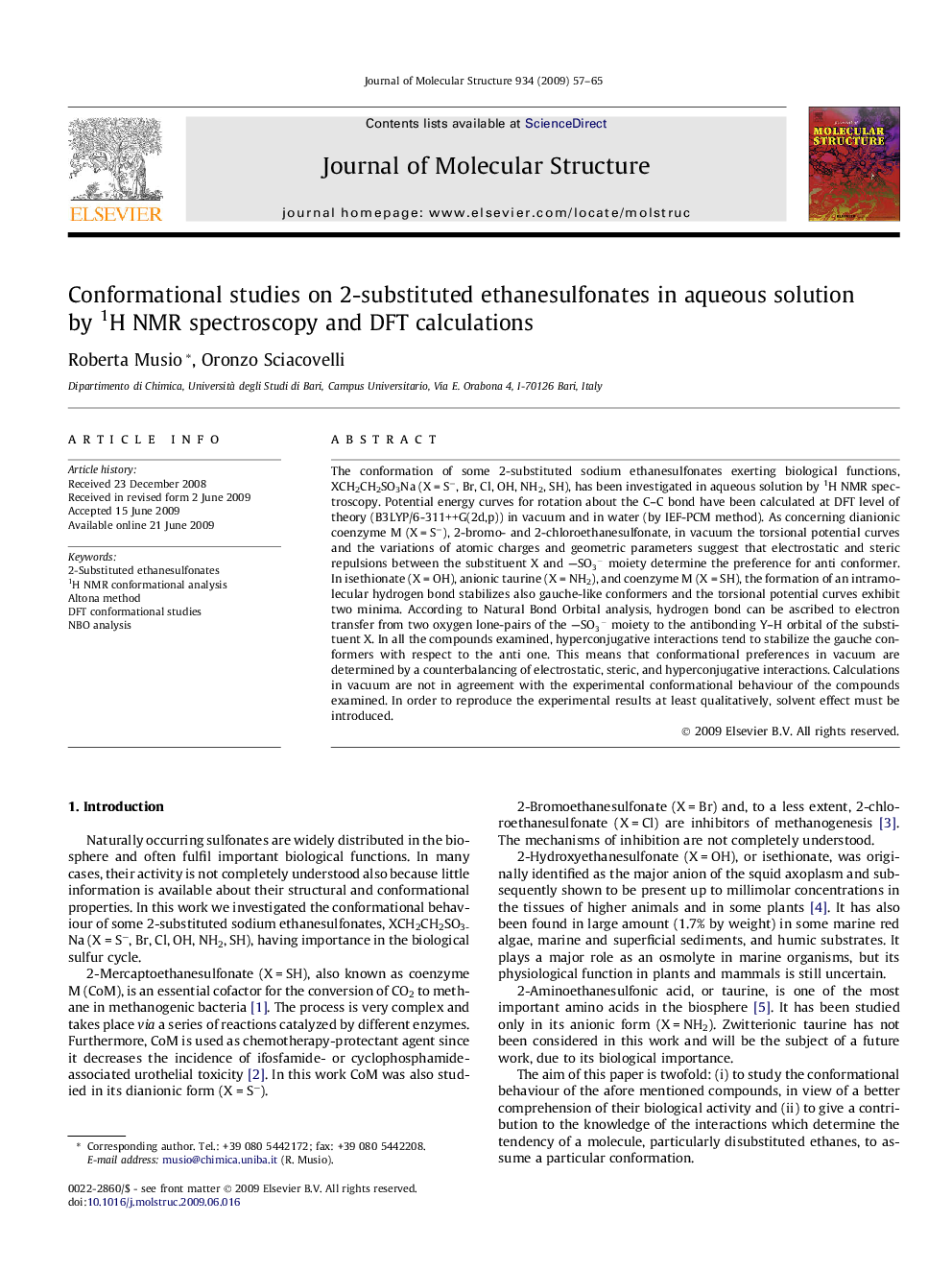| Article ID | Journal | Published Year | Pages | File Type |
|---|---|---|---|---|
| 1411336 | Journal of Molecular Structure | 2009 | 9 Pages |
Abstract
The conformation of some 2-substituted sodium ethanesulfonates exerting biological functions, XCH2CH2SO3Na (XÂ =Â Sâ, Br, Cl, OH, NH2, SH), has been investigated in aqueous solution by 1H NMR spectroscopy. Potential energy curves for rotation about the C-C bond have been calculated at DFT level of theory (B3LYP/6-311++G(2d,p)) in vacuum and in water (by IEF-PCM method). As concerning dianionic coenzyme M (XÂ =Â Sâ), 2-bromo- and 2-chloroethanesulfonate, in vacuum the torsional potential curves and the variations of atomic charges and geometric parameters suggest that electrostatic and steric repulsions between the substituent X and -SO3- moiety determine the preference for anti conformer. In isethionate (XÂ =Â OH), anionic taurine (XÂ =Â NH2), and coenzyme M (XÂ =Â SH), the formation of an intramolecular hydrogen bond stabilizes also gauche-like conformers and the torsional potential curves exhibit two minima. According to Natural Bond Orbital analysis, hydrogen bond can be ascribed to electron transfer from two oxygen lone-pairs of the -SO3- moiety to the antibonding Y-H orbital of the substituent X. In all the compounds examined, hyperconjugative interactions tend to stabilize the gauche conformers with respect to the anti one. This means that conformational preferences in vacuum are determined by a counterbalancing of electrostatic, steric, and hyperconjugative interactions. Calculations in vacuum are not in agreement with the experimental conformational behaviour of the compounds examined. In order to reproduce the experimental results at least qualitatively, solvent effect must be introduced.
Keywords
Related Topics
Physical Sciences and Engineering
Chemistry
Organic Chemistry
Authors
Roberta Musio, Oronzo Sciacovelli,
